Happy New Year to you!
If you’re lying on a beach or walking in the bush, then you won’t be reading this, but if you’re holidaying at home, you may like to see what we’re doing in the garden.
We’re in a Last Quarter moon phase which is a maintenance (or rest!) phase, so perfect for the jobs that need doing at our place.
Let’s start with the bad news. Blight! One moment the tomatoes are looking lovely and clean, the next there are the tell-tale signs of dying leaves at the bottom of the plants and on closer examination the spots on the stems.

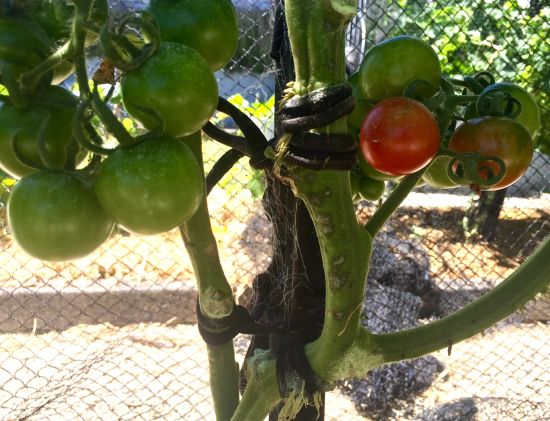
The good part about it is there’s plenty of fruit on the plants and the top part of them is nice and healthy.


So firstly, choosing as non-humid a day as is possible in our neck of the woods (predominant wind a southerly, plenty of breeze and some clear sky up above), I removed the affected leaves – using the delateralling technique of moving the stem up and down which results in it snapping off, and using a paintbrush applying Flowers of Sulphur to the wound.
Then, after a long discussion with Rob, much as we believe if you can avoid using copper it’s for the best (as it kills beneficial bacteria and fungi in the soil), we decided I should apply some liquid copper on the blight.
Rob suggested purchasing the 1-litre Solo sprayer as it lasts a lifetime ($20 from Mitre 10) and I ended up getting Kiwicare Liquid Copper as copper was a bit thin on the shelves.

I gave the plants a very light spray, trying to avoid dripping much on the soil, and mainly focussing on the affected parts. They look tidy now, so fingers crossed the fruit ripens and the plants do okay. Will give them one more dose in a week’s time, then review.

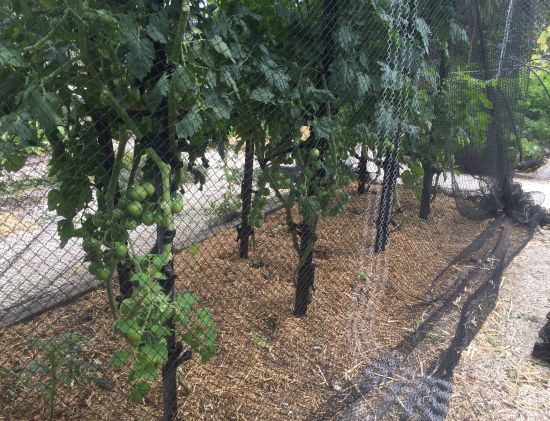
Also found this little monster in the tomato patch which won’t have been making things any better.
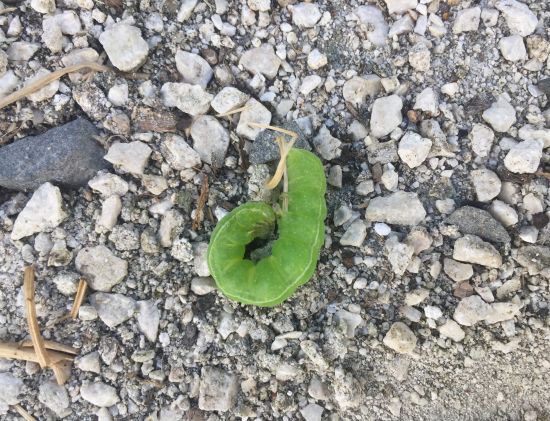
On the spraying theme, I’ve given everything, but in particular the cucurbits (pumpkins, cucumbers, zucchini), a foliar spray of seaweed. The cucurbits may succumb to powdery mildew and seaweed is a preventative, alkalising the leaves.
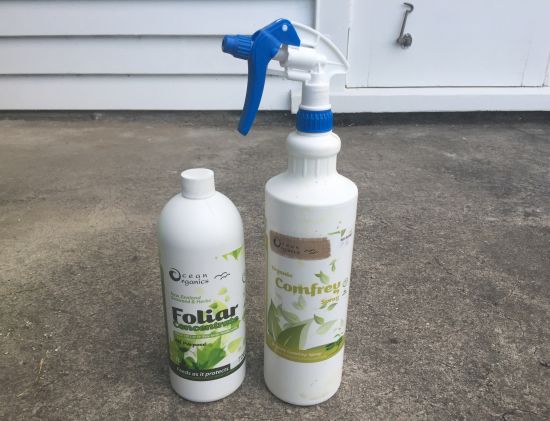
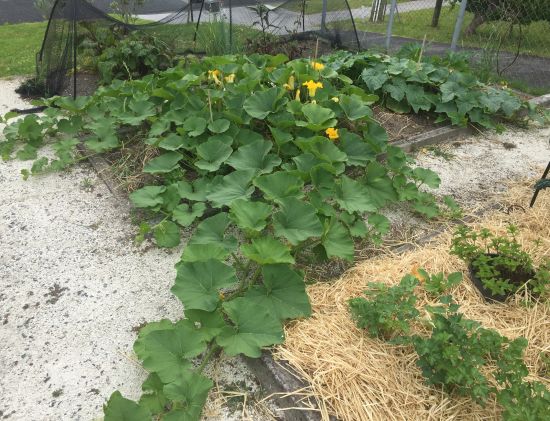
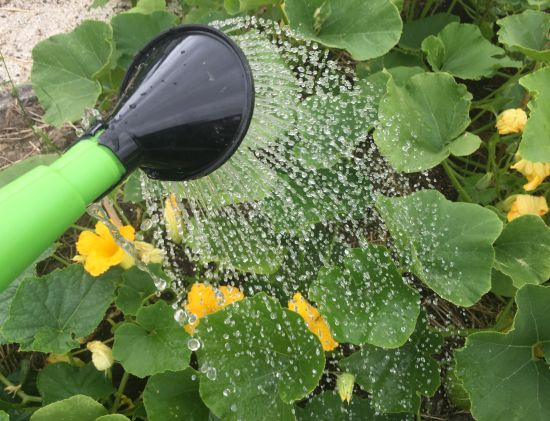
The tomatoes have received a foliar spray of comfrey (which improves fruit production) and I’ve also made some of our own comfrey spray by harvesting it from under our fruit trees, adding it to a bucket with a lid, filling with water to the top of the comfrey and lightly sitting the lid on the top. Don’t have the lid on tightly as it needs to breathe. This mix takes 3-4 weeks to break down. Stir it all in well, use the comfrey mass in your compost and dilute the liquid to the colour of weak tea before applying. Good for all fruiting vegetables including potatoes.
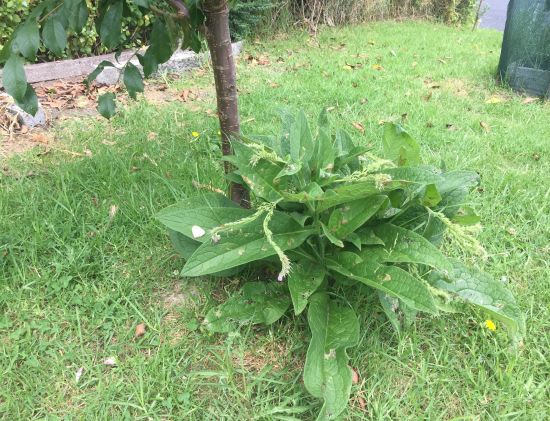


You can make liquid seaweed this way too if you collect it from the beach – the large kelp straps, if you can get them, make the best brew.
The sweetcorn is coming away nicely, and as sweetcorn needs loads of food, I’ve given it a liquid feed of Yates Fish and Blood and Bone. Will repeat weekly during this main growing period. Yates Fish and Seaweed is another good option.

And lastly, we have enough biomass to make a hot compost, so off we go. It’s about 3 months since we made the last one.
Ingredients are our grass clippings, egg cartons, biomass (spent crops), used coffee grounds, chicken manure and rock dust (Natures Organic Fertiliser), soil or mature compost, water – layered up pretty much in that order.



As long as your heap is around 1 cubic metre it will work. I always cover my heap with black polythene so as not to attract rodents (even though it’ll be too hot for them in the beginning) and it also helps warm the heap up. After 2 days it should be around 70 degrees Celsius. Turn after 2 weeks, and a week or so later it should be ready to use. Don’t be concerned if it’s chunky – the earthworms will break it down further for you once it’s on the garden bed.
And on a more philosophical note, while the media reports that the most popular word that sums up 2021 was “S..t”, and while I acknowledge a great deal of loss this past year, I think we’ve learned a lot that’s positive. After all, it takes a crisis to shift ways of living that aren’t sustainable. I’ve just been reading Helena Norberg-Hodge’s (Local Futures) end of 2021 observations and this is part of it…
“Even in the ‘brave new world’ of 2021, I am witnessing the beginnings of such a future (Helena’s vision for a cultural turning towards what she calls ‘ancient futures’). I am seeing a return to practices that remind me of what I saw in traditional Ladakh (Kashmir): fathers carrying babies on their backs; communities sitting in circle; young people choosing to leave their screen-based jobs to become farmers; information networks of mutual aid; friends gardening, cooking and baking bread together; families choosing to live on the land and developing relationships with the animals and plants around them.
“These are examples of what I call ‘ancient futures microtrends’. They are reinforced by increasing respect for indigenous wisdom, for women and for the feminine, love for wild nature, a growing appreciation for all things vernacular, handmade, artisanal and local, and the emergence of alternative, ecological practices in every discipline: from natural medicine to natural building, from eco-psychology to ecological agriculture.”
Heartening.
HAPPY 2022!! From Jan and Rob ❤️
Website designed by www.thecornerstorecollective.com
Developed by Richard Hpa
6 Responses
😊 Happy 2022 to you two may we have many years in our gardens.
May we care deeply for our earth.
With much kindness 🙏
Jude
Thank you Jude. Well said 🙂
Hello Jan and Rob
Thank you for all the news and tips throughout a very challenging year.Hopefully after having the experience of what you call a S T year the next one 2022 will be better.So Happy new year to you both keep healthy and safe
Thank you Beryl 🙂
Thankyou Jan and Rob for the time you spend teaching better garden practice. And for the calender which went up on New Year’s Eve.
Hope you had a great Christmas and Happy New Year.
Susanne
Thank you Susanne and for your continued support of us 🙂